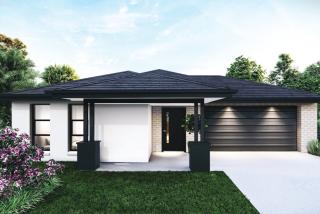_1764731815HUFUX.jpg)
Maximise Your Tax Savings: The Smart Investor’s Guide to Rental Property Deductions!
Unlock the full potential of your investment property with every possible deduction—legally and efficiently.
Why Deductions Matter for Property Investors
As an Australian property investor, every dollar saved on tax is a dollar that bolsters your return on investment. The ATO recognises a raft of deductions from mortgage interest to depreciation and repairs. Missing out on these can cost you dearly.
This guide explains exactly what you can claim and how to claim it.
1. Ongoing Costs: Maintenance, Management & Loan Interest
You can claim many out-of-pocket expenses incurred while the property is income-producing:
-
Property management fees
-
Insurance premiums
-
Advertising costs for attracting new tenants
-
Council and water rates
-
Loan interest, which is fully deductible
2. Repairs vs Capital Improvements
The ATO allows immediate claims for repairs—defined as restoring something to its original condition, like fixing a broken window. However, if you're doing renovations or upgrades, those costs are considered capital works and must be claimed over time.
3. Depreciation—Your Fantasy-Value Tax Break
A. Division 43 Capital Works
-
Applies to structural elements like bricks, tiles, decks, and driveways.
-
Typically deductible at 2.5% per year over 40 years
-
Available for post-1987 properties, or earlier if renovations occurred on/after that date.
B. Division 40 Plant & Equipment
-
Covers removable items: air-conditioners, carpets, ovens, furniture, blinds, etc.
-
Depreciation rates depend on the effective life set by the ATO—for example, a $2,000 air-conditioner may claim $200/year under prime cost.
Following the 2017 ATO changes, you can only claim plant & equipment depreciation on newly purchased assets—unless the property is commercial or purchased before May 9, 2017.
4. Queensland Example: Mixed-Use or Part-Year Rental
If you live in your investment property part-time (e.g. holiday use), only claim deductions for the rental period. Apportion expenses based on the time rented or floor-area if part is private use.
5. Negative Gearing & Pay-As-You-Go Variations
Many investors are negatively geared—where interest > rental income. This loss can be offset against other income, reducing tax and boosting cash flow.
You can also apply for PAYG withholding variation (PAYG 221D) to adjust your tax withholding during the year, freeing up cash earlier.
6. Getting a Depreciation Schedule
You’ll need a Quantity Surveyor to prepare a depreciation schedule, assessing your property's assets and structural details.
-
Cost range: $495–$770+ depending on property complexity.
-
Turnaround: ~5 business days for residential properties.
-
Guarantee: Many providers, like Washington Brown, ensure your deductions exceed their fee, or the report is free*
7. Common Pitfalls & How to Avoid Them
-
Over-claiming repairs as capital improvements – wrong claims can trigger ATO audits.
-
Purchasing second-hand plant & equipment after 2017 means no depreciation claim.
-
Failing to apportion costs if the property is used by you or not genuinely available for rent.
Effectively claiming deductions—from loan interest and repairs to depreciation and capital works—can significantly reduce taxable income, accelerate cash flow, and sharpen your investment returns. With careful planning, accurate depreciation schedules, and compliance with ATO rules, you’ll protect your portfolio and keep more of what you earn.
Ready to maximise your investment returns? Visit our website to view all our available investment properties. Discover opportunities backed by smart tax strategies and expert support.
Source File: Washington Brown
_1753150958JS0u1-cover.png)

_1764211036lHsm6.png)
_1762916285NoFl4.jpg)
_17623130443GJfk.jpg)
_1760408926gJ50A.jpg)
_17598783571Kaml.jpg)



